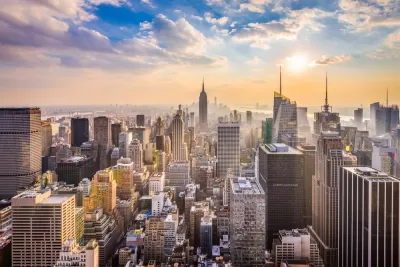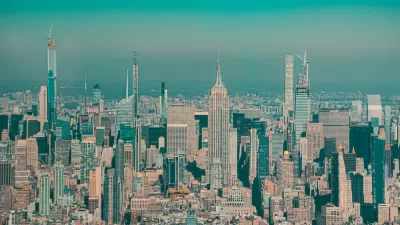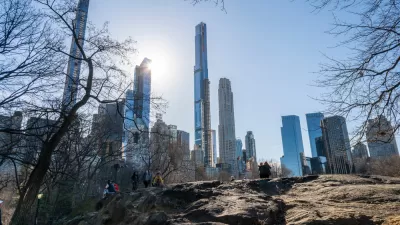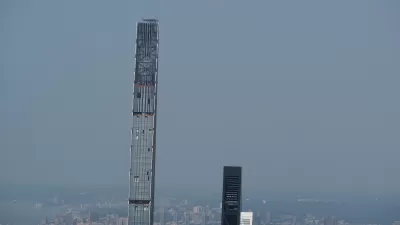After a decade of skyward expansion, even more skyscrapers are on the horizon in Manhattan.

Stefanos Chen reports on the next wave of skyscrapers expected to transform the New York City skyline, following a high-rise building boom that has added numerous luxury condo towers to the city in recent years.
"There are currently nine completed towers in New York that are over 1,000 feet tall, and seven of them were built after 2007. Nearly twice that many — another 16 such towers — are being planned or are under construction, according to the Council on Tall Buildings and Urban Habitat, a Chicago-based nonprofit that tracks high-rise construction," according to Chen.
Chen describes the wave of construction as unprecedented, and also writes that the city's skyline "looks starkly different than it did a decade ago, redrawn by the massive Hudson Yards project on the West Side of Manhattan; a profusion of towers on and around Billionaires’ Row in Midtown; and the revitalization of Lower Manhattan, with One World Trade Center leading the way."
The article includes images of Lower Manhattan from 1925, 1980, 2001, and 2019; the East Side of Manhattan from 1931, 1960, and 2019; and the West Side of Manhattan from 1931, 1984, and 2019. The article places the plans for new skyscrapers in context of the technological innovations that enabled new building heights, and the cultural importance of skyscrapers to the popular imagination of the city.
In a follow up article, Ryan Deffenbaugh examines five examples of skyscrapers that will leave a lasting mark on the city's skyline in the near future: Tower Fifth, Central Park Tower, 111 West 57th Street, JPMorgan Headquarters, and One Vanderbilt.
FULL STORY: New York City’s Evolving Skyline

Study: Maui’s Plan to Convert Vacation Rentals to Long-Term Housing Could Cause Nearly $1 Billion Economic Loss
The plan would reduce visitor accommodation by 25,% resulting in 1,900 jobs lost.

North Texas Transit Leaders Tout Benefits of TOD for Growing Region
At a summit focused on transit-oriented development, policymakers discussed how North Texas’ expanded light rail system can serve as a tool for economic growth.

Why Should We Subsidize Public Transportation?
Many public transit agencies face financial stress due to rising costs, declining fare revenue, and declining subsidies. Transit advocates must provide a strong business case for increasing public transit funding.

How to Make US Trains Faster
Changes to boarding platforms and a switch to electric trains could improve U.S. passenger rail service without the added cost of high-speed rail.

Columbia’s Revitalized ‘Loop’ Is a Hub for Local Entrepreneurs
A focus on small businesses is helping a commercial corridor in Columbia, Missouri thrive.

Invasive Insect Threatens Minnesota’s Ash Forests
The Emerald Ash Borer is a rapidly spreading invasive pest threatening Minnesota’s ash trees, and homeowners are encouraged to plant diverse replacement species, avoid moving ash firewood, and monitor for signs of infestation.
Urban Design for Planners 1: Software Tools
This six-course series explores essential urban design concepts using open source software and equips planners with the tools they need to participate fully in the urban design process.
Planning for Universal Design
Learn the tools for implementing Universal Design in planning regulations.
City of Santa Clarita
Ascent Environmental
Institute for Housing and Urban Development Studies (IHS)
City of Grandview
Harvard GSD Executive Education
Toledo-Lucas County Plan Commissions
Salt Lake City
NYU Wagner Graduate School of Public Service





























